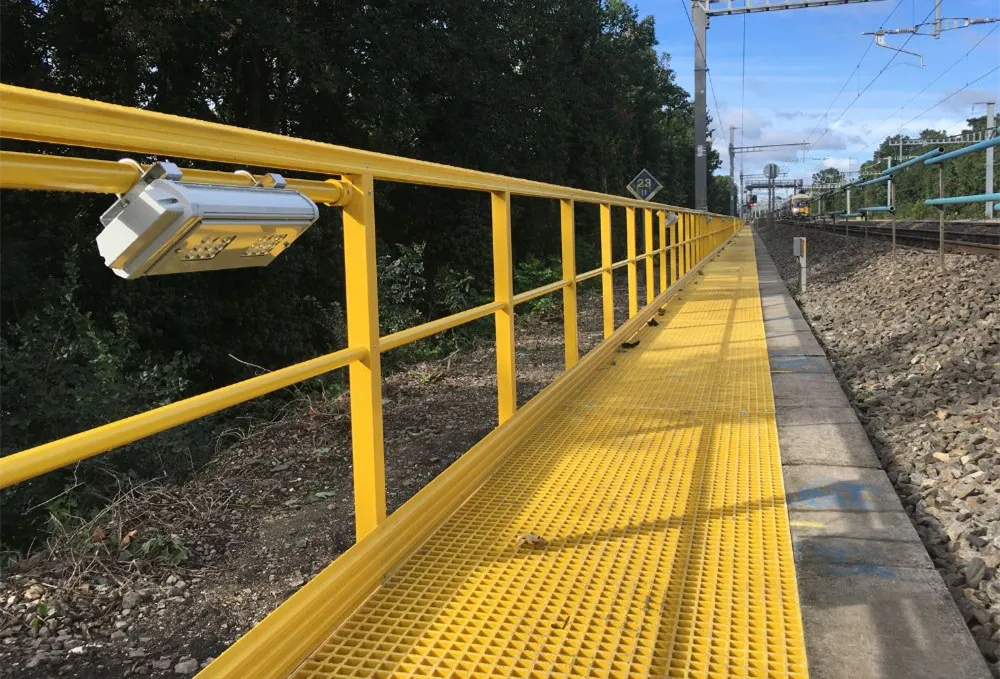loading...
- No. 9, Xingyuan South Street, Dongwaihuan Road, Zaoqiang County, Hengshui, Hebei, China
- admin@zjcomposites.com
- +86 15097380338
- Welcome to visit our website!
Innovative Applications of Fiber Reinforced Polymer Rebar in Modern Construction and Structural Engineering
The Rise of Fiber Reinforced Polymer Rebar in Modern Construction
In recent years, the construction industry has witnessed significant advancements in materials technology, leading to the emergence of innovative solutions designed to enhance structural integrity while reducing environmental impact. One such innovation is Fiber Reinforced Polymer (FRP) rebar, a composite material that is rapidly gaining traction in various construction applications. This article explores the properties, benefits, and potential future of FRP rebar in the building sector.
FRP rebar is composed of a polymer matrix reinforced with fibers, typically glass, carbon, or aramid. This unique combination results in a material that is both lightweight and exceptionally strong, making it an attractive alternative to traditional steel rebar. One of the most notable characteristics of FRP rebar is its high tensile strength-to-weight ratio, which allows for easier handling and installation on job sites. Unlike steel, which can corrode over time when exposed to moisture and chemicals, FRP rebar boasts excellent resistance to corrosion and environmental degradation, leading to extended service life and reduced maintenance costs.
The Rise of Fiber Reinforced Polymer Rebar in Modern Construction
Another important advantage of FRP rebar is its non-magnetic properties, which make it ideal for applications in sensitive environments such as hospitals, laboratories, and nuclear facilities. Structures that require minimal electromagnetic interference benefit significantly from the use of FRP rebar, allowing for the continuous operation of sensitive equipment without disruption.
fiber reinforced polymer rebar

Furthermore, the use of FRP rebar aligns with contemporary sustainability goals. The manufacturing process of FRP materials typically requires less energy compared to steel production, resulting in a lower carbon footprint. Additionally, the extended lifecycle of structures utilizing FRP rebar contributes to resource conservation, as less frequent repairs and replacements are necessary.
Despite its many advantages, the adoption of FRP rebar has not been without challenges. One of the primary hurdles is the initial cost, which often exceeds that of traditional steel rebar. However, proponents argue that the long-term savings associated with reduced maintenance and increased durability can offset these upfront expenses. Furthermore, ongoing research and development efforts are focused on decreasing production costs and improving the material's performance characteristics.
As the construction industry increasingly embraces innovative materials, the future of FRP rebar looks promising. Continued advancements in fiber technology and polymer chemistry are expected to enhance the performance of FRP rebar and expand its range of applications. Moreover, as building codes and regulations evolve to incorporate new materials, FRP rebar is likely to become more widely specified in engineering designs.
In conclusion, Fiber Reinforced Polymer rebar presents an exciting opportunity for the construction industry by offering a lightweight, corrosion-resistant, and sustainable alternative to traditional steel reinforcement. As awareness of its benefits grows and production costs decrease, FRP rebar is poised to play a crucial role in shaping the future of modern infrastructure. With its ability to meet the demanding challenges of today’s construction projects while aligning with sustainability objectives, FRP rebar may very well be at the forefront of the next generation of building materials.
-
The Rise of FRP Profiles: Strong, Lightweight, and Built to LastNewsJul.14,2025
-
SMC Panel Tanks: A Modern Water Storage Solution for All EnvironmentsNewsJul.14,2025
-
GRP Grating: A Modern Solution for Safe and Durable Access SystemsNewsJul.14,2025
-
Galvanized Steel Water Tanks: Durable, Reliable, and Ready for UseNewsJul.14,2025
-
FRP Mini Mesh Grating: The Safer, Smarter Flooring SolutionNewsJul.14,2025
-
Exploring FRP Vessels: Durable Solutions for Modern Fluid HandlingNewsJul.14,2025
-
GRP Structures: The Future of Lightweight, High-Performance EngineeringNewsJun.20,2025
